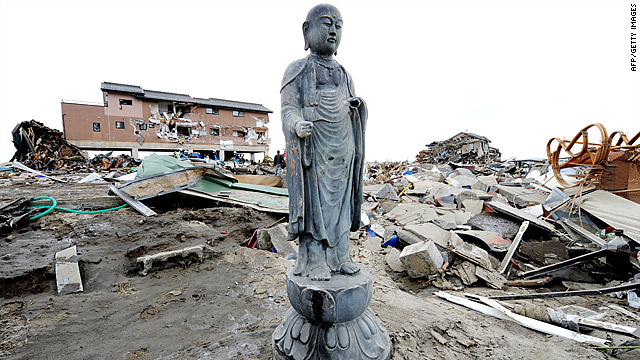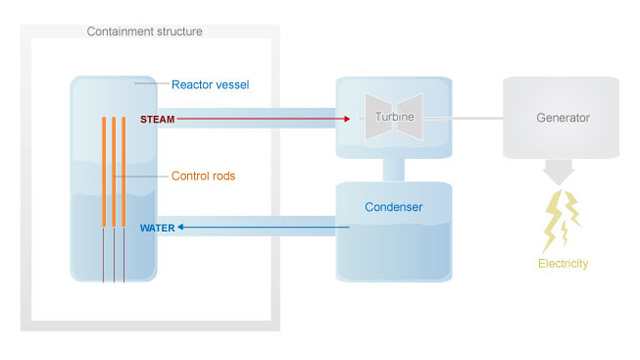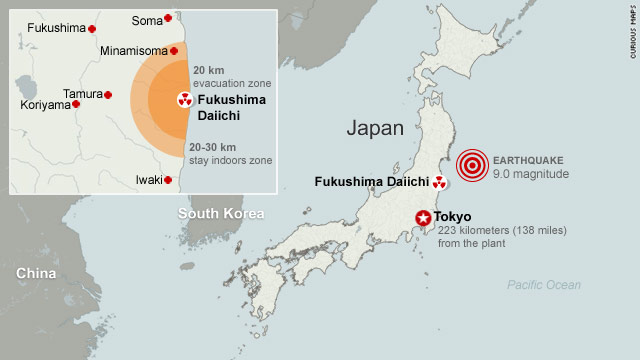sunlool
www.sunlool.com
Giorgio Armani on sunlool ----- online shop
Hello everybody, pairs of sunglasses is necessary when summer is coming.
Wear on the Giorgio Armani Sunglasses that are ahead of their time, always trendy and never out of fashion. These sunglasses are a perfect blend of functionality, comfort, and style. They come with frames in matte black, matte dark gray, shiny black, and semi matte brown colors. Gray, gray gradient, brown, and gray shaded, rectangular lenses promise a clear vision and defend your eyes from the harsh UV rays.
Libya 'to halt military action'
Libya's government is declaring an immediate ceasefire, hours after a UN Security Council resolution backed a no-fly zone over the country.
prada sunglasses, D&G sunglasses,chloe sunglasses
Libyan Foreign Minister Mussa Kussa said the ceasefire was intended "to protect civilians".
The UN resolution supported "all necessary measures" to protect civilians, short of an occupation.
Western powers had been discussing how to enforce the no-fly zone.
Before the announcement of the ceasefire, heavy fighting between troops loyal to Libyan leader Col Muammar Gaddafi and rebel forces was reported to be continuing.
The pro-Gaddafi forces have been advancing eastwards towards the rebel stronghold of Benghazi, and there was fighting on Friday in the coastal town of Al-Zuwaytina.
Rebels said that government forces had also been bombarding the western city of Misrata.
UN Security Council Resolution 1973 gave broad backing to military action against all threats to civilians, which correspondents say could include bombing Col Gaddafi's forces on the ground if deemed necessary.
Rebel forces in Benghazi reacted with joy to the UN resolution, but a government spokesman condemned UN "aggression". One of Col Gaddafi's sons, Saif al-Islam, said the resolution was "unfair" as Libya had not been bombing civilians.
Six days later, Japanese still confronting magnitude of quake crisis
Tune in to "AC360º" tonight at 10 ET as Anderson Cooper, Dr. Sanjay Gupta and Soledad O'Brien report live from Japan on the quake and tsunami's catastrophic effects.
Tokyo (CNN) -- Thousands of Japanese filled evacuation shelters or joined foreigners seeking a way out of the country Thursday in the aftermath of last week's devastating earthquake, tsunami and resulting nuclear crisis at stricken reactors.
Cold, snowy weather in parts of the Asian nation further heightened the hardship of a nation facing what its leaders call its biggest disaster since World War II.
Fears of possible nuclear catastrophe were evident. After rallying Wednesday, stocks in Japan fell early Thursday, with the Nikkei 225 index, the most prominent measure of stocks traded in Tokyo, down about 2% in early trading.
Concerns spread far beyond Japan's borders, with U.S. stock markets falling and the U.S. military dispatching a radiation-sniffing aircraft to determine if toxic clouds were rising from disabled reactors.

 Gallery: Japan reeling after massive quake
Gallery: Japan reeling after massive quake

 Explainer: Producing nuclear energy
Explainer: Producing nuclear energy
Nearly 13,000 people are dead or missing and several hundred thousand have been left homeless from Friday's earthquake and tsunami.
An extraordinary television address Wednesday by Emperor Akihito showed the magnitude of the catastrophe.
Such a speech by a sitting emperor is usually reserved for times of extreme crisis or war, and Emperor Akihito's direct appeal to the public was the first time he has spoken to the public amid such a crisis.
"I truly hope the victims of the disaster never give up hope, take care of themselves, and live strong for tomorrow," said the dignified and understated Emperor Akihito, in a calm and poignant oration delivered from the Imperial Palace. "Also, I want all citizens of Japan to remember everyone who has been affected by the devastation, not only today but for a long time afterwards -- and help with the recovery."
The 77-year-old ceremonial but deeply revered chief of state underlined Prime Minister Naoto Kan's earlier assertion that Japan is going through its worst crisis since World War II.
The emperor delivered his speech on the same day that white smoke and a new blaze at the damaged Fukushima Daiichi nuclear plant added to radiation fears.
"Currently, the entire nation is putting forth its best effort to save all suffering people. However, under the severe cold weather, evacuees are having a very difficult time because they lack food, water, and energy sources," he said. "Also, I am deeply concerned that the current nuclear plant situation is critical. I truly hope that with so many people working together to help, the situation will not worsen."
On Thursday morning, helicopters operated by Japan's self-defense forces made four passes over the plant's No. 3 reactor to dump water. Public broadcaster NHK reported that at least 12 water-cannon trucks would be brought in, so that forces could try to douse the reactor from the ground,
While Japan has called for anyone living within 12 miles of the disable nuclear plant to evacuate, Great Britain and the United States dramatically expanded their evacuation warnings Wednesday, telling their respective citizens within 50 miles to either stay indoors or move away.
It was the first time since the nuclear crisis began that the United States and Japanese governments have differed on advising what their citizens should do. Before Wednesday, the United States had urged American citizens in Japan to follow the recommendations of the Japanese government. cartier sunglasses
A cloud of smoke seen at the stricken plant sparked fear there might have been a breach in the containment vessel in the nuclear plant's No. 3 reactor, government officials said. Earlier explosions and fires also had hit other reactors at the plant.

 Map: Fukushima Daiichi
Map: Fukushima Daiichi
Officials asked workers at the plant to evacuate Wednesday after the cloud rose above the plant and radiation levels spiked. The levels later fell and authorities allowed the workers to return, the Tokyo Electric Power Company said.
Tests on tap water in Fukushima city, 80 kilometers (50 miles) away found radiation -- though at levels not harmful to the human body, and later tests showed no radiation in the water, government officials said.
Officials have been working to resolve cooling problems at four of Fukushima Daiichi's six reactors in the wake of the 9.0-magnitude earthquake and ensuing tsunami.
Japanese authorities could not rule out the possibility of a meltdown at the troubled reactors. Workers have been pumping sea water into reactors in an effort to prevent further damage.
A meltdown occurs when nuclear fuel rods cannot be cooled, thus melting the reactor core and causing a release of radioactivity. In the worst-case scenario, the fuel can spill out of the containment unit and spread toxic radioactivity through the air and water. That, public health officials say, can cause both immediate and long-term health problems, including radiation poisoning and cancer.
As the government and workers scrambled to stabilize the plant, the search continued for survivors from last week's cruel combination of natural disasters.
By Wednesday night, the National Police Agency reported 4,314 deaths. Another 8,606 people are missing and 2,282 were injured, the agency said. The number of dead is expected to go up as rescuers reach more hard-hit areas.
Public broadcaster NHK has reported that 450,000 people were living in shelters, where people grieved over lost loved ones and worried about relatives who are missing from villages and towns inundated by the tsunami waves off the east coast of Honshu.
Thousands of people packed Narita International Airport in Tokyo, with some sitting on floors.
"We just headed for the mountains directly away from the nuclear power station," Richard Struthers, who lives about 70 kilometers (43 miles) from the Fukushima plant. He said he is "taking no chances" with his baby son.
Boris Suban of Moriya -- about 210 kilometers (130 miles) from the nuclear plant -- decided to travel across the country to Hiroshima prefecture -- a location he admits is ironic. U.S. planes dropped atomic bombs on the cities of Hiroshima and Nagasaki during World War II.
'We thought that the reactor is not safe and too near," Suban said. "Plus, if the panic spreads, we will be unable to leave Japan and get the full exposure sitting on our sofa."
Meanwhile, across the country, emergency workers from Japan, foreign governments and international aid groups continued to scour tangled and displaced piles of debris, searching for survivors. Scores of countries, regions and international organizations have offered assistance, according to the Japanese foreign affairs ministry.
Rescue work is being complicated by the hundreds of aftershocks that have rocked Japan since Friday's quake. Since the initial earthquake, the U.S. Geological Survey has reported about 35 quakes with magnitudes of 6.0 or greater, and more than 200 others greater than 5.0.
John Roos, the U.S. ambassador to Japan, said the U.S. military has delivered over 7,000 pounds of food and water to the disaster area so far and more than $5.8 million of U.S. aid has come to Japan.
He said nine U.S. ships are assisting in the relief operations, and helicopters and other aircraft have now flown over 50 missions to conduct survivor recoveries, transport passengers, and distribute food and water supplies in the most needy areas.
Donations rolled in. Delta Air Lines is pledging $1 million in cash and "in-kind support" to disaster relief efforts, for example.
Meanwhile, the crisis has rekindled debate and concern over nuclear power.
Energy Secretary Steven Chu told members of Congress Wednesday that the Obama White House still backs the further development of American nuclear power -- a stance opposed by some key congressional Democrats.
Spanish Prime Minister Jose Luis Rodriguez Zapatero announced Wednesday that the government will review safety at all of Spain's nuclear power plants.
The massive quake was the strongest in recorded history to hit Japan, according to USGS records that date to 1900.
Lady Gaga and Marc Jacobs to receive top prizes at fashion industry awards
NEW YORK — Lady Gaga and her wild no-holds-barred wardrobe has created a fashion revolution — and for that she’ll get this year’s style icon award from the Council of Fashion Designers of America.
CFDA president Diane von Furstenberg and executive director Steven Kolb announced the nominees and honorees for the annual industry awards at a reception Wednesday evening at the DVF studio. brand sunglasses
The other major prize to be awarded at the June 6 ceremony, for lifetime achievement, will go to Marc Jacobs, considered by insiders to be the most influential American designer working now. Living up to that hype, Jacobs was also nominated in the competitive womenswear designer of the year category against Alexander Wang, and the design duo Lazaro Hernandez and Jack McCollough of Proenza Schouler.
Jacobs, in his late 40s, is one of the youngest designers to be honored with the Geoffrey Beene Lifetime Achievement Award. Von Furstenberg said she had already received an e-mail from him joking that he’d like the award reduced to a “half-lifetime award.” women clothing
“I told him that I’m much older than him and I’m still kicking,” von Furstenberg told the crowd, which included Vera Wang, Anna Wintour, Zac Posen, and Ashley and Mary-Kate Olsen.
The Olsens were nominated in the womenswear category for emerging talent for their collection The Row, as were Prabal Gurung and Joseph Altuzarra. Alexander Wang, Phillip Lim and Robert Geller will compete in the up-and-coming menswear designer category, and Alejandro Ingelmo, Eddie Borgo, Pamella Love and Jason Wu in accessories.
In addition to the statuette, winners named as new talent also receive a financial prize from crystal company Swarovski.
Fukushima workers withdraw after radiation spikes
A rise in radiation levels at Japan's stricken Fukushima nuclear plant has forced workers to suspend operations, a government spokesman says.
He was speaking after smoke was seen rising from reactor three. Earlier, a blaze struck reactor four for the second time in two days.
Friday's 9.0-magnitude earthquake and tsunami, which killed thousands, damaged the plant's cooling functions.
The site has also been hit by four explosions, triggering radiation leaks.
France has urged its nationals living in Tokyo to leave the country or head to southern Japan because of the risk of radiation.
'On standby'On Wednesday, Japanese Cabinet Secretary Yukio Edano told a news briefing that workers at the Fukushima Daiichi plant had been withdrawn following the sudden rise in radiation levels.
It is believed that about 50 employees had been working at the plant - 220km (140 miles) north of Tokyo - to try to cool its four reactors and avert a meltdown. prada sunglasses
Mr Edano also said that the radiation levels were now falling from 1,000 millisieverts on Wednesday morning to 600-800.
But that was still more than average, Mr Edano said, adding that "workers cannot carry out even minimal work at the plant now. Because of the radiation risk, we are on standby." nike air shoes
Why earthquake-prone Japan relies on nuclear power
I have just read a article about the earthquake in Japan as follows:
Nuclear power is increasingly seen as a way for Japan, and other nations including the United States, to reduce dependence on fossil fuels.
Nuclear energy provides an estimated 30 percent of electricity in Japan, despite it being one of the world's most seismically volatile nations.
Why? Nuclear power is increasingly seen as a way for Japan to reduce dependence on fossil fuels. That's the same reason why President Obama has also been pushing the US to build its first nuclear power plant in almost three decades. In his 2010 State of the Union address, he called for "a new generation of safe, clean nuclear power plants."
But as shown by the unfolding nuclear crisis in Japan, with two reactors at the Fukushima Daiichi Nuclear Power Station suffering explosions since Friday's massive earthquake knocked out cooling systems at the plant, there is simply no easy solution to humanity's need for energy. While fossil fuel raises concerns of climate change, nuclear energy raises the specter of radioactive contamination.
"Japan's debate closely mirrors those worldwide, as governments highlight nuclear power as an easier way to cut carbon emissions than boosting wind and solar power," the Monitor wrote a year ago in the article "Earthquake prone Japan sees green in new nuclear power plants."
Nuclear role in cutting carbonJapan has touted nuclear power as key to reducing carbon emissions to 75 percent of 1990 levels by 2020. The public remains wary about the push, with one poll showing that 54 percent of the population feels anxious or uneasy about nuclear power. Shunsuke Kondo, chairman of Japan's Atomic Energy Commission, told the Monitor then that his nation's nuclear power plants were built to withstand all but a "once in 10,000 year" earthquake.
Tragically, that's exactly what hit Friday when an 8.9-magnitude temblor rocked the nation's northeast coast and sent a 30-foot high tsunami crashing inland, knocking out electricity at Fukushima Daiichi Nuclear Power Station and causing cooling systems to fail in at least three reactors.
Nuclear plants also provide an estimated 20 percent of US power, with Obama recently pledging $8 billion in loan guarantees for the construction of the first nuclear power plant in the US since 1979, the year of the Three Mile Island meltdown. Proposals are currently being heard for 20 new reactors to be built over the next 15 to 20 years.
According to the Nuclear Regulatory Commission, there are currently 104 licensed nuclear power plants, with eight sitting in the earthquake-prone West Coast states of Washington, California, and Arizona. (Here's a map of reactors across the US.) Two of those plants in California sit especially close to fault lines.
The New York Times today reports that "most of the nuclear plants in the United States share some or all of the risk factors that played a role at Fukushima Daiichi: locations on tsunami-prone coastlines or near earthquake faults, aging plants and backup electrical systems that rely on diesel generators and batteries that could fail in extreme circumstances."
Overreacting to the nuclear crisis?Even a year ago, as the Monitor reported, Japan's earthquake-prone geology caused concern among activists and raised the specter of a quake-induced Chernobyl. Comparisons to Ukraine's 1986 disaster have been stated repeatedly in recent days, despite officials downplaying such a scenario.
The Wall Street Journal's Op-Ed page has criticized American media for "overreacting" to the nuclear crisis in Japan. "Unlike the Soviets at Chernobyl, the Japanese have been taking sensible precautions like evacuating people near the plants and handing out iodine pills even if they may never be needed. These precautions increase public worry, but better to take them even if they prove to be unnecessary," the WSJ said.
"We should learn from the Japanese nuclear crisis, not let it feed a political panic over nuclear power in general," the Journal said.